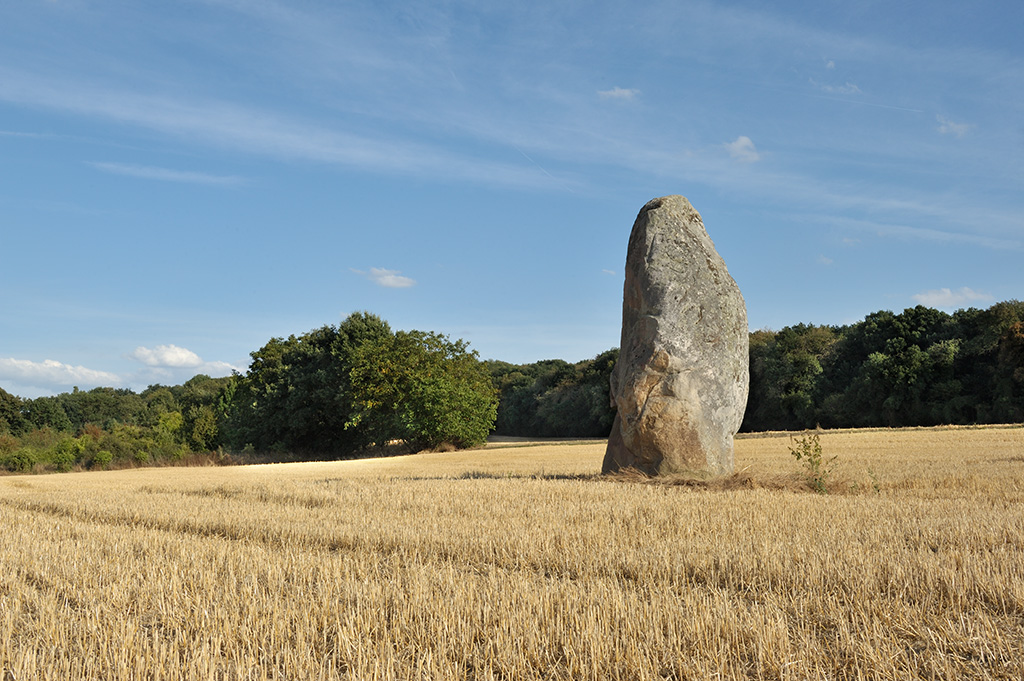As expected the night was short and my body this morning is stiff as wood. Just getting up seems like an unachievable goal. But the early morning air is too cold to linger on, I need to get going just to get warm again. The trail traces its way down towards the valley, at the bottom of which runs a charming little river.
Rivers have played a key role in our lives. Without water we are not. Which explains why we originally settled by their banks in order to survive. Now, we just use rivers as dumps, hoping the flow will “drain” our stupidity further along.

It’s by those rivers that the testaments of our ancestral presence is most often found in the midst of our modern expansions. Menhirs, old farms, preserved villages, noble homes and imposing castles, remind us of a time when we knew how to live in harmony with our surroundings. Each territory had its own specificities, its own style, dictated by an environment providing the raw materials to build with. The type of stones found in the fields, the essence of wood growing in the surrounding forests, the color of the mud used to make the joints of the walls, etc, all provided a particular cachet, a regional flavor to the architecture.

Nothing then was standardized, universal, subjected to norms or regulations. Everything was build with a purpose, to answer a specific need. Local villagers would come to help their neighbors, most often members of their own family, with the labor, just as they would in August all gather for the harvest. It gave sense to the word commune. Today our administrative communes have lost all sense of communities. Instead they’ve become sad additions of individuals complaining about one another, fearing outsiders, leaving in imposed segregations behind the locked doors of their modern “pavilions”; standardized constructions on the outskirts, build with urgency with “cheap” materials that begin to crumble a few years after completion.
Luckily the trail understands beauty and avoids as much as possible the sadness of our century. You could think I am one of those that keep looking at the past convinced it was better then, but I am not. Not everything was great in the past, far from it, but we could have learned from it, instead of throwing it all away, thinking we knew better. Now that so much damage has been done, it might be a good idea to reconsider where we are heading, and see how we can get back to a more “considerate” lifestyle.
